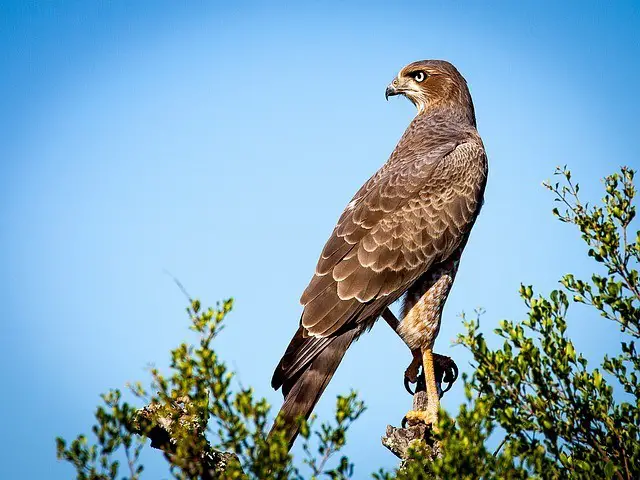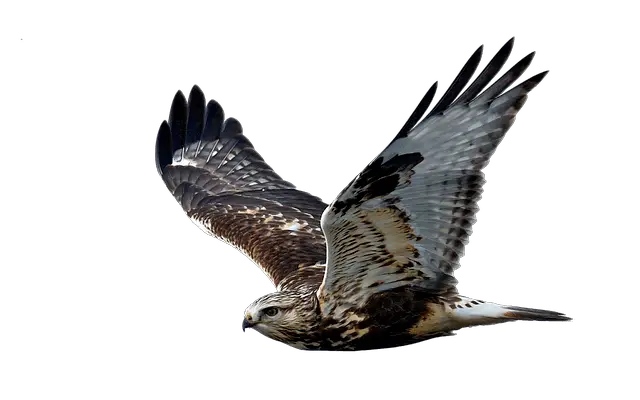Falcon vs. Hawk: Differences and Who would Win?
A falcon and a hawk are often confused in the popular discourse. They are actually quite different, with each bird possessing different features. Although they belong to the same family, they do not belong to the same species. That is why, along with a few similarities, there are considerable differences as well.
Where to Find Falcon and Hawk?
We will begin our discussion with the habitats in which these birds of prey are found in. Peregrine falcons or just falcons as they are popularly known are the most common bird predators.
They are found on all continents except for one- Antarctica. Falcons are usually found in open and wide spaces and are found near sea coasts along with shorebirds.
They are also found in deserts and the tundra regions. In big cities, they make their habitats in bridges or tall skyscrapers.
Let us talk about hawks now. Hawks on the other hand are birds that can acclimatize themselves to most surroundings. They too prefer open habitats.
They thrive in deserts and open fields because the prey is found more easily in these places.
Since hawks can adapt themselves to most surroundings, they are found in mountains, plains, tropics as well as in moist regions. They are found in northern and central America, West Indies, and Jamaica.
Major Differences Between Falcons and Hawks
We will now compare the major differences between the Falcons and Hawks using certain parameters. Let us begin with Hawks.
- Size: There are many species of hawks that vary in size. The largest hawk species- The Northern Goshawk can be up to 27 inches long with their wingspan measuring 50 inches and their weight being 4.8 pounds. The smallest species on the other hand measures 7-9 inches long with the wingspan length being 15-20 inches and weight up to 3 ounces.
- Complexion: Some hawk species have a signature double moustache which is not that obvious. One can then identify them from a pale colour and the female hawk from its slightly larger size and a darker colour. Other factors of appearance include sharp talons and large curved beaks. While some species of hawks have solid colours, others have markings or bands on their body.
Hawks have large eyes with powerful eyesight which helps them see almost 8 times clearer than human beings. They can also see colours and perceive the ultraviolet range. They can identify colours that humans cannot. They have a good hearing capacity but not a strong sense of smell. They can catch their prey on-air and on the land with the help of their sharp nails.
- Motion: Some hawk species have a flat and bat-like flight. They also float when they glide. The Merlin species has powerful wing beats, almost like that of a piston. Hawks flock as a group and that group is called a kettle that consists of thousands of birds of different species.
- Food: Hawks are predators and only consume meat. Since they are found in a wide range of habitats, their diets also vary. Hawks usually hunt for rabbits, snakes, rats, lizards, fishes, and squirrels.
- Hunting habits: Being birds of prey, hawks are known for their speed, the full extent of which is seen when they are chasing after their prey.

Falcon
Let Us Now Look At the Features of Falcons For a Comparative Analysis
- Size: There are almost 40 different species of falcons that can be found worldwide. The size varies from species to species with the Gyrfalcon being the largest that measures 24 inches in length and has a wingspan of 51 inches. It also weighs approximately 48 ounces. The smallest species of the falcon, on the other hand, is the Seychelles Kestrel that measures up to 8 inches long with a wingspan of 16-18 inches and a weight ranging around 2.5-3 ounces.
- Complexion: Adult Peregrine falcons have bluish-grey wings, a dark brown back, buff-colored underbelly with brown spots, and white-colored faces with a black stripe. They also have curved, hook-like beaks and strong talons. Falcons are quite robust and agile.
- Motion: The Peregrine falcon is well known for its speed. It can fly up to 200 miles per hour. Falcons float while gliding in the air, unlike hawks. Falcons can survive up to 25 years.
- Food: Falcons are birds of prey and they consume meat. They consume various animals such as smaller birds, mice, rats, rabbits, snakes, fishes, insects, frogs, and even other Raptors. These birds are quite opportunistic and hunt whatever comes their way.
- Hunting Habits: A falcon is a diurnal bird. This means that they hunt and prey in the daytime. They have excellent eyesight and use it to gauge the location of their prey. Falcons are fast and strong and can carry their prey which is almost 6 times heavier than their body weight. Unlike hawks, falcons kill with their beak. Falcons make nests in trees and lay eggs on ridges, rocks, or hollow trees.

A Cruising Hawk
Flight Comparison- Hawks vs Falcons
In this section, we will discuss the flight patterns of hawks and falcons which would make it easier for you to distinguish between them. Although flying is different from hunting, we can see a lot of characteristic patterns of flight when these birds are searching for prey.
Therefore, we will look at the flight patterns in conjunction with hunting patterns. Hawks hunt their prey by using sophisticated techniques of ambush.
They pounce on their prey from hidden perches high up in the trees and bend their bodies to gain momentum before pouncing with their talons.
Hawks have long tails which helps them to control and change their directions in the air. Their long and tapered wings also help with maneuvering.
Since they use their talons to kill and tear the prey, their beaks are smoother as compared to that of falcons. In terms of size, hawks are larger than falcons but have smaller wingspans. They can hunt land vertebrates like rabbits and frogs quite easily.
Falcons are quite speedy and can dive and fly at high speeds. They can also change directions in the air easily due to their long, thin wings.
Peregrine falcons are the fastest birds and even the fastest animals on the earth with a diving speed of 322 km/hr. While hunting, they fly at great heights and swoop down and bend to form a teardrop shape to gain even more speed before pouncing on the prey.
They also prey on ground vertebrates such as rabbits and rats, animals like frogs, fishes, snakes, and other birds like sparrows and pigeons.
Some Facts About Hawks
- While hunting, hawks can dive at the speed of around 150 miles per hour to catch their prey.
- Hawks follow a diurnal lifestyle i.e. they hunt during the day.
- Some hawk species are migratory and travel for more than a thousand miles a year from nesting areas to feeding areas in winters.
- Different species of hawk mate at different times in the year
- For hawks, the mating season is inaugurated at the winter end or early spring.
Some Facts About Falcons
- Falcons belong to the kingdom Animalia, Phylum Chordata, Class Aves, Order Falconiformes, Family Falconidae, and Genus Falco.
- The Conservation Status of falcons is near threatened
- Falcons almost went extinct in North America
- Falcons are found in Asia, Africa, Europe, North America, South America, Central America, Eurasia, and Oceania.
- Falcons are the fastest animals on earth, both on-air and land
- The incubation period of falcons last for 1 month approximately
- Falcons lead a solitary lifestyle
- Falcons have an average lifespan of 15- 18 years
- Falcons have a strong cardiovascular system that allows them to beat their wings at the speed of 5m/s
- Human beings used to use falcons for hunting for thousands of years
- Falcons are monogamous birds. They mate for life. They mate with only one partner throughout their reproductive period.
- Falcons are not picky when it comes to eating.
Who Would Win- Falcon vs Hawk
In this section, the comparative analysis of falcons and hawks reaches its pinnacle by pitting the two against each other and asking who would win.
Let us take a closer look at the results of such an approach. Falcons are smaller in size than hawks. It is also faster than the hawk and its speed gives it an immense predatory advantage. Here, the falcon would win.
If we consider other aspects, however, then hawk trumps the falcon. This is because in a head-to-head fight the animal that is larger in size is more likely to win.
In all cases, however, one has to take cognizance of which species of hawks and falcons are being used. There are multiple species of both hawks and falcons with each one having different physical features. In aerial flight combat, the hawk’s size is a disadvantage.
Conclusion
In a nutshell, while a falcon hunts with its beak, a hawk hunts with its feet. This article was all about enumerating the difference between falcons and hawks so that you can identify them.
Hopefully, these features and a comparison of their strengths were quite evident through the course of this article and significantly enriched your knowledge.
